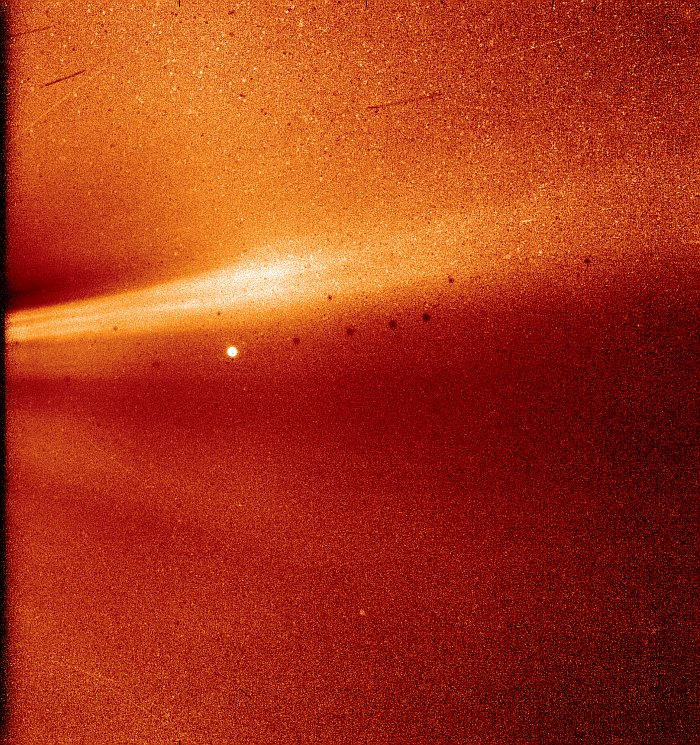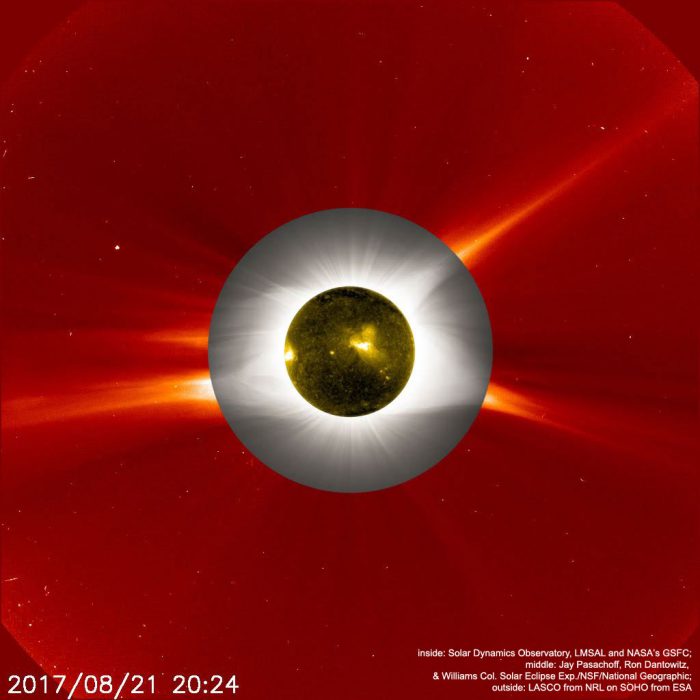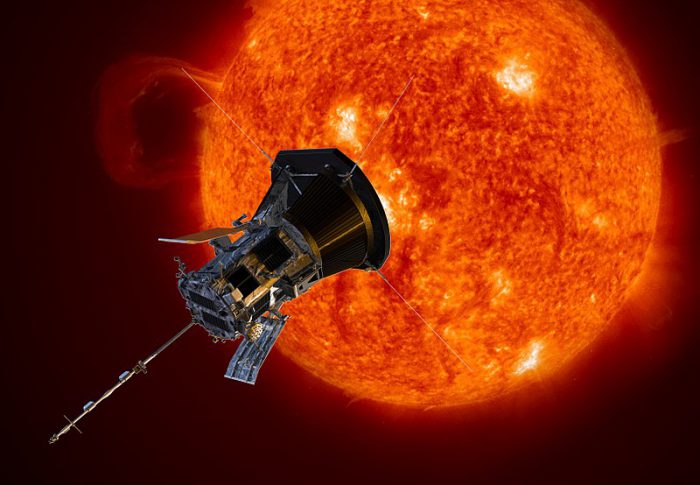When NASA's Parker Solar Probe launched in August, expectations of what we would see were sky high. And why not?
This spacecraft is set to take us closer than ever before to the source of all life on Earth ... the Sun. To be precise, it will become the first human-made object to fly through the Sun's atmosphere, or corona. And even though its mission will last until 2025, it turns out that we didn't have to wait long for Parker to start delivering amazing results.
On November 6, it performed its first solar fly-by, and we think that the picture that it sent back speaks for itself...

The shiny orb in the background is Mercury, photobombing the corona. (NASA/Naval Research Laboratory/Parker Solar Probe)
Party streamers
Okay, perhaps this image doesn't fully speak for itself. What you're looking at is an image of the corona. It was taken at a distance of 27.2 million km (16.9 million miles) from the Sun. That might not sound super-close, but it's a fraction of the 149.6 million km (91 million miles) that we are from our star.
The streaks that you see moving from left to right are a pair of coronal streamers. This is an idea of the kind of image that we're used to seeing of these things.

A collection of images during the 2017 solar eclipse featuring coronal streamers. (Inside: Solar Dynamics Observatory, LMSAL and NASA’s GSFC; Middle: Jay Pasachoff, Ron Dantowitz, and the Williams College Solar Eclipse Expedition/NSF/National Geographic; Outside: LASCO from NRL on SOHO from ESA)
Being this close to the Sun is going to give scientists more than just killer photos. It's going to provide information that will prove vital to uncovering the secrets of the corona—an enormous atmosphere that is actually hotter than the Sun itself and which extends millions of kilometres beyond its surface.
How close? Well...
Just the beginning
Over the next six years or so, Parker will perform 26 fly-bys of our Sun. During this time, it will use the gravity of Venus several times to slingshot it closer and closer in orbit to the Sun.
We mentioned above that the new photo was taken 27.2 million kilometres away. Though that is already about twice as close as the planet Mercury ever gets to the Sun, it is not enough to actually pass through the corona. But that time is coming.
By the start of 2021, it will be 14.1 million km away. By the end of that year? 9.2 million. And finally, by Christmas Eve 2024, it will reach just 6.9 million kilometres (4.2 million miles) away—well within the corona itself.
What will it see within such a blistering atmosphere—a place where the temperatures can reach nearly 1,000,000°C? Let's just say that we're glad that it's Parker making the trip and not us!
 Just months after it was launched, the Parker Solar Prove is already making history. (NASA/Johns Hopkins APL/Steve Gribben)
Just months after it was launched, the Parker Solar Prove is already making history. (NASA/Johns Hopkins APL/Steve Gribben)









